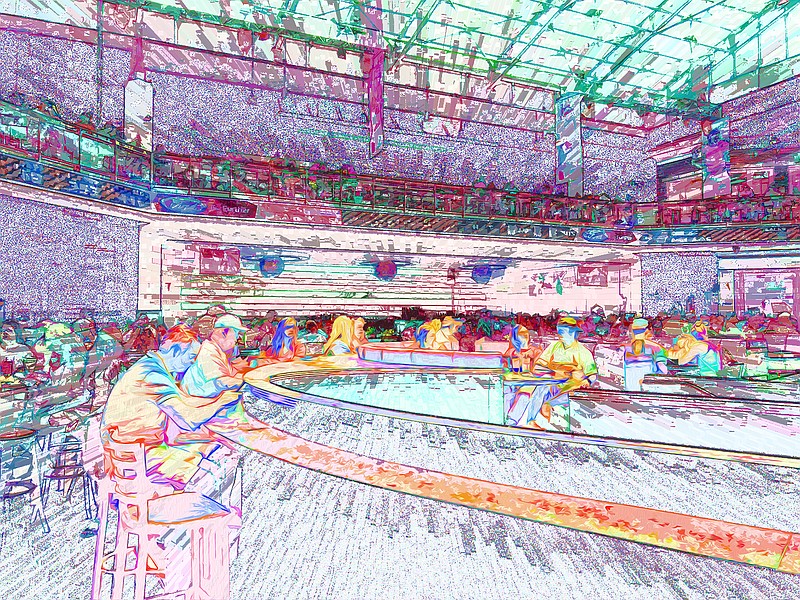Every artist has a handful of works that seem to change everything.
Mine arrived a few months ago.
I had been working on a piece captured in the Busch Stadium concourse during a Cardinals-Reds game when the Cardinals were in the midst of that incredible late summer winning streak. I wasn't happy with the lighting; I wasn't happy with the subject focus. My standard techniques didn't seem to help. I began trying different tools in ways I hadn't tried before; effecting the art using an approach I was entirely unfamiliar with.
When I finished, I had to sit back and stare, mouth gaping, at this new work, which I've since titled "The Wanderers." Wow! What had I just done? Can I pull it off again?! I'm still not sure about its composition, but wow!
Since then, I've only finished a few works that have not pulled directly from the lessons learned from creating "The Wanderers."
I create photo art, which I define as computer-based art using a photograph as a base. I may take the initial photographic capture far into the abstract, or I may simply apply a few filters that accentuate the stronger characteristics of the photograph itself. It depends on the nature of the image. What's there; what's not there. What makes this capture art? And I like to produce it on metal plates when I have the time, and the scratch, to do so.
It's a medium that creates very unique art, but also one that defies standard categorizations. It's not digital art because it doesn't begin as a blank canvas. It's not a photograph, per se; it's effected by a series of brush strokes like a painting, but it's not a painting and the brush strokes aren't made by a brush.
One doesn't have to look far afield to see that computer-based art has become central in all mediums - not just the visual arts but also music, design, literature, fashion, film and architecture. The ability of the computer to extend the reach of human potential is the defining characteristic of our age.
There can be an attitude among traditionalists, however, that anything touched by the computer is not really "art." The computer constitutes an asterisk; something to consider separately, something that's not up to the standard.
It's an attitude I, by and large, ignore.
First of all, I can't function as an artist if I'm simply trying to mimic what's been done before; no artist can. Secondly, for art education to be effective, for a young person to have any chance of success at all in art of any kind, they have to have an understanding in using the computer or a tablet to affect its creation. Art has always changed with the advent of new kinds of paints, new materials.
The computer, after all, is just a new kind of paint.
The software I use works in layers (DaVinci applied paint the same way, but I digress). My usual technique was to filter, add a layer with another filter, add another layer with another filter and so forth, until I feel I've brought forth from the pixels the art hidden there, all within the same file. I may do that a dozen or more times.
In creating "The Wanderers," instead of doing it all in just one file, I pulled the photograph into pieces, saving each and filtering each in its own file, then folded them back into the original using different blending techniques and transparencies. Finally, I used global effects to assure everything tied together.
This approach has opened up new worlds. I've gone from having several dozen tools for creating art to having several hundred. Every time out, I'm discovering something new. Sometimes that works better than others, but that constant experimentation is the fundamental process of creating art.
I began as a straight-up photographer using film and a darkroom. I took to the computer because it opened avenues of expression previously unavailable. To have, at this stage and after these years, come up with something so fresh and vibrant is enormously gratifying.
Curtis Hendricks is a Jefferson City-based artist who specializes in photography. He enjoys taking his art to the next level with photo enhancement and effects.

